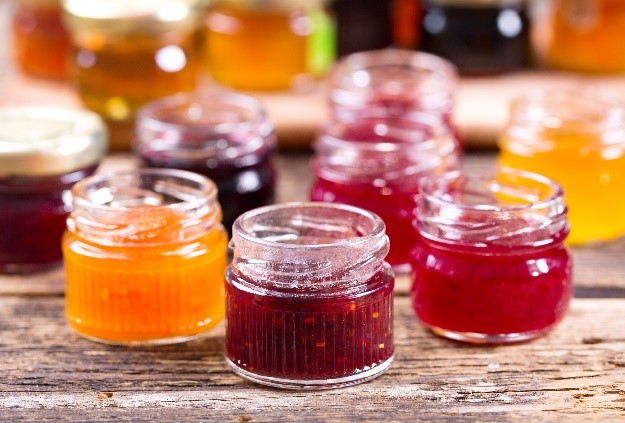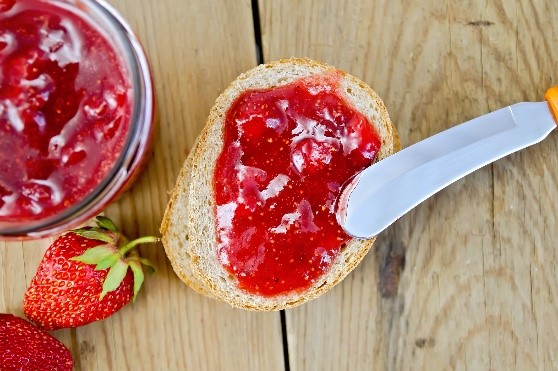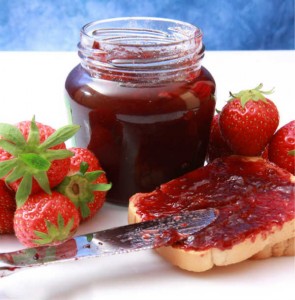Application Leaflet Jams, Jellies and Marmalades




From early civilization, people preserved seasonal fruits by just cooking them or together with some form of sugar. Cooking destroys the fruit’s enzymes and also reduces the water activity if enough water is boiled out, inhibiting the growth of spoilage organisms such as yeasts and moulds. The heating helps the preservation and also serves to extract the naturally occurring pectin (usually this is high methoxyl pectin) in the fruit. With the sugar present in the system and helped by the fruit’s own acidity, the natural and now activated pectin will thicken or gel the product. This age-old process is the basis of all present-day large-scale jam making, but modern technology also plays a considerable role.
To this day, jams, jellies and marmalades remain some of the most popular and convenient food products for consumers. Pectin has long been used to provide stability, extended shelf-life and texture to a wide range of these products. Today, commercially produced pectins are applied to compensate for the deficiency from the fruit and to make sure the jam manufacturing process runs smoothly and continuously, the finished products are of consistent quality, excellent stability and the required texture. Also, specially developed and produced pectin types like, e.g. low methoxyl pectins are widely used in gel systems where the sugar content or the acidity is too small for high methoxyl pectins to be effective.
To appreciate the role and correct application of pectins in jams, jellies, marmalades and preserves, it is useful for the pectin user to familiarize themselves with a few terms which describe and characterize them.
Learn about HM and LM pectin, jam production methods, jam types like consumer or industrial jams, reduced sugar jams etc., and the different commercial VIDOPECTINE pectin types UNIPEKTIN has to offer.
